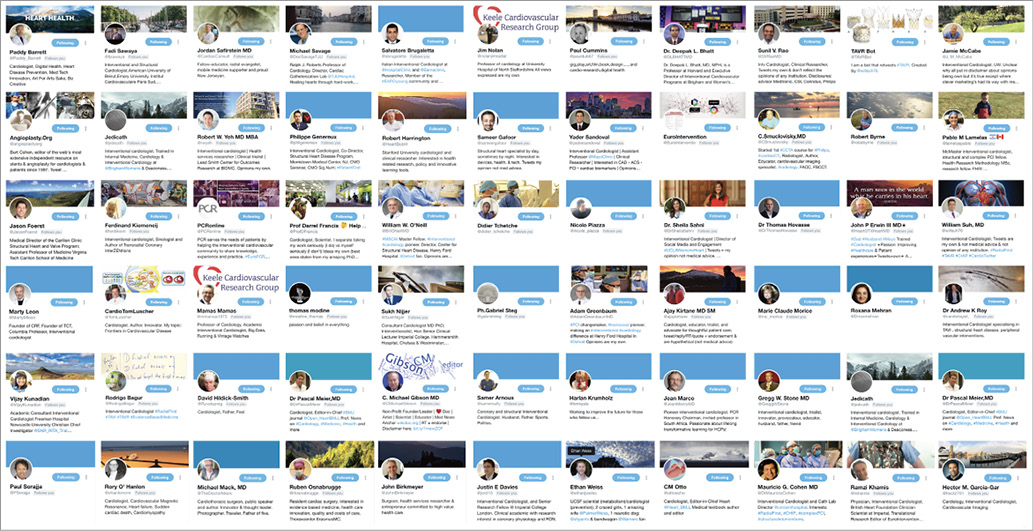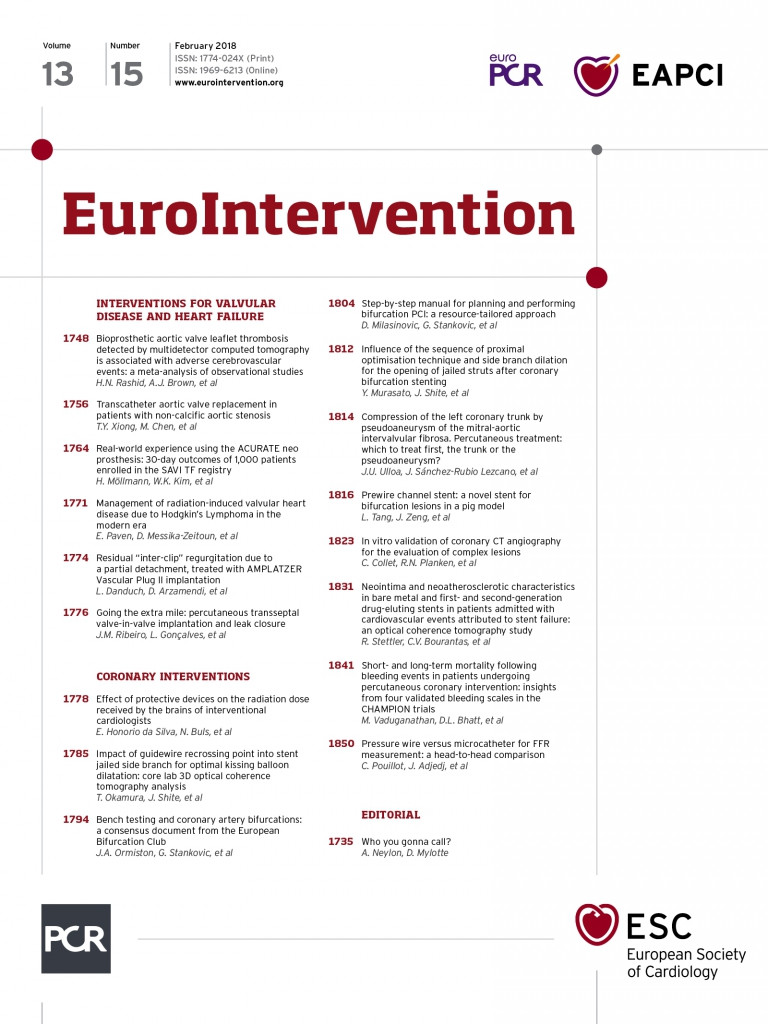
In this edition of EuroIntervention, separate groups outline their experience managing patients with unusual and complex valvular heart disease (VHD): radiation-induced mitral and aortic disease treated by transcatheter and surgical techniques1; transcatheter aortic valve implantation for acalcific fibrotic aortic stenosis in inoperable elderly patients2; mitral bioprosthesis failure associated with intraprosthetic and paraprosthetic regurgitation addressed using transseptal Edwards SAPIEN 3 (Edwards Lifesciences, Irvine, CA, USA) implantation with concomitant use of an AMPLATZER™ Vascular Plug III (St. Jude Medical, St. Paul, MN, USA)3; and late severe mitral regurgitation due to partial MitraClip® (Abbott Vascular, Santa Clara, CA, USA) detachment treated by placement of another MitraClip and subsequent interclip AMPLATZER Vascular Plug II insertion4.
Reading these reports, one is compelled to reflect on how we approach rare and challenging cases. What would we have done differently? Would an alternative strategy have yielded a different outcome? When cases fall outside the safety net of guideline or even consensus opinion, how do we proceed? How was the chosen treatment strategy conceived? It is axiomatic that each of these cases would have been discussed in some detail by the team of clinicians caring for the patient. The weekly cardiology-cardiothoracic multidisciplinary team (MDT) conference is the traditional forum to discuss these taxing patients. However, even in heart valve centres of excellence, it is unlikely that the local team will have sufficient experience of, for example, MitraClip partial detachment or acalcific aortic stenosis, to guide patient care confidently. The rise of smartphones and social media means that the MDT can now be instantly cast on the global stage drawing on an unprecedented wealth of experience, insight and opinion. The medical community has been quick to adopt these advances and it has revolutionised the way we communicate, collaborate, and share knowledge.
Group chat applications such as WhatsApp and WeChat are frequently used to share anonymised clinical information as well as photo and video data among trusted peers and colleagues. The relationship between improved team performance and knowledge exchange is well recognised, and studies examining the usefulness of WhatsApp in clinical decision making conclude that the low-cost application enhances patient care and physician communication5,6. If detailed analysis of raw data is required, then file-transfer specialists such as Dropbox and WeTransfer are invaluable resources for sending large data files to collaborators, industry partners, and core laboratories. EuroIntervention’s own website and that of PCRonline, among others, have vast libraries of clinical case presentations, high-quality images and how should I treat forums that can be useful resources when dealing with rare cases.
More recently, social media has emerged as a forum to discuss interesting and challenging cases amongst peers. Platforms such as Twitter and Facebook afford clinicians from all over the globe the opportunity to interact directly with experts (Figure 1). On my Twitter feed, the last few weeks have seen meaningful and informative interaction on subjects such as balloon fracture of aortic and mitral bioprostheses, transcatheter valve selection among patients with challenging anatomy, and transcatheter management of pure aortic incompetence. The pioneer of radial interventions Ferdinand Kiemeneij (@ferdikiem) has taught us the technique and potential of distal transradial interventions using the Twitter hashtag (#) ldTRA with aligned instructional videos on YouTube (https://www.youtube.com/watch?v=-If5oAF0KJo). The Ethica Award recipient has even initiated a clinical trial of this technique using Twitter.

Figure 1. The Twitter MDT.
Virtual case discussions and Twitter polls aimed at drawing consensus opinion from a diverse medical community are now commonplace. As always, it is important to be careful whose advice we follow. In a Twitter post of 280 characters, many of the important nuances of a complex case can be lost. Armchair philosophers may share an opinion on the basis of a two-line clinical case presentation and clinical images, but it is the interaction at human level, not with the touchscreen, that will remain the cornerstone of good clinical practice.
While web-based communications can facilitate clinical care, they also introduce new questions in relation to data sharing and patient confidentiality7. Although individual components may be anonymised, patient identification remains possible. The risk of breach of confidentiality must be considered and avoided at all costs. The rules and ethical considerations for publishing clinical images in medical journals should apply to on-line social media platforms, and most large healthcare organisations and authorities have guidelines to protect patient healthcare information online.
The development of mobile technology allows an individual clinician to access with ease and learn from the collective experiences of many colleagues around the globe. This is the essence of education. When faced with a difficult clinical situation, mobile tools can be invaluable resources that have the potential to improve patient care. Embrace them – sensibly.
Conflict of interest statement
The authors have no conflicts of interest to declare.

